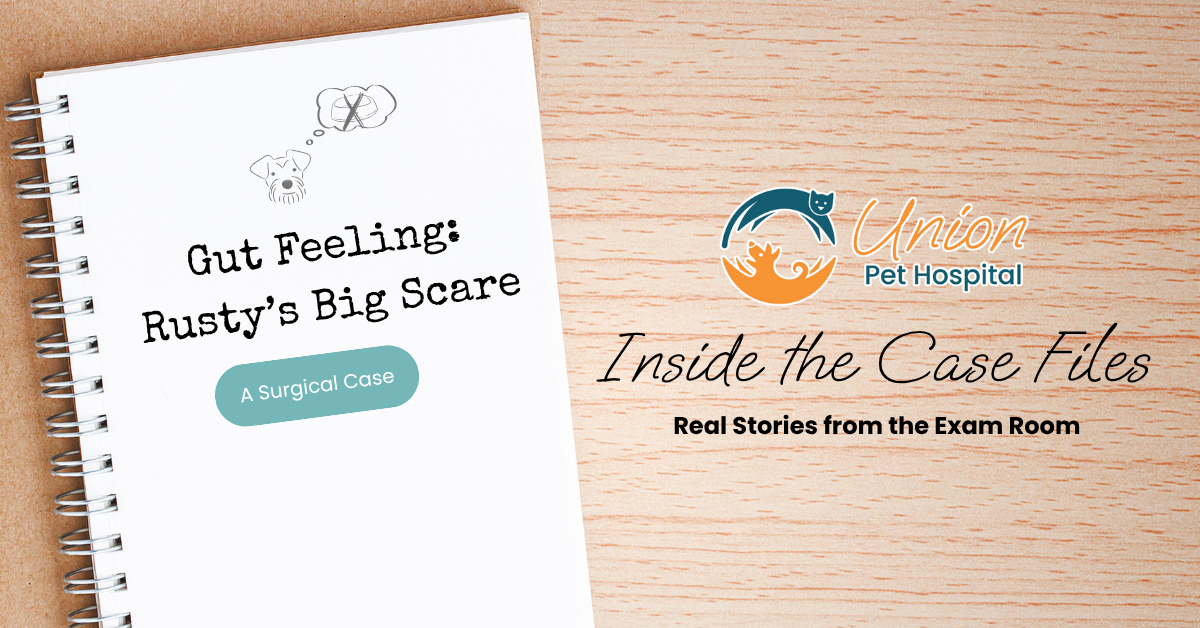Rusty Wasn’t Himself: A Splenic Mass, a Big Decision, and a Life Saved
Rusty wasn’t acting like himself, and his family knew it. The sweet schnauzer mix, who usually greeted his family every morning with tail wags and energy, seemed tired. Not just sleepy—but withdrawn, slow, and strangely bloated around the belly.
He hadn’t stopped eating entirely and wasn’t throwing up, but something was off . His family did the right thing and brought him in.
Rusty’s family brought him in with a simple concern, he just wasn’t himself. We listened closely, performed a full physical exam, and based on what we found recommended an abdominal ultrasound. That’s when we discovered a large mass on his spleen.
What’s a Spleen—and Why Does It Matter?
The spleen sits quietly in your pet’s abdomen, doing big work behind the scenes:
- It filters the blood
- Helps with immune function
- Stores red blood cells
- Recycles old or damaged cells
The good news is that your pet can technically live without it—but when something goes wrong with the spleen, it’s often serious.
Splenic Masses: Silent but Serious
Rusty’s ultrasound revealed a large mass, but here’s the tricky part, we couldn’t tell exactly what it was without removing it.
Splenic masses can be:
- Benign (like a hematoma or blood-filled sac)
- Malignant (like hemangiosarcoma, a fast-growing cancer)
However, no matter what type, there’s one major risk they all share and that is that they can rupture.
The Danger of Waiting
Splenic masses often grow silently and then suddenly rupture, leading to internal bleeding. In some cases, that’s the first sign anything is wrong.
Rusty’s family caught it early. He wasn’t bleeding yet. That gave us a safer window to act.
What Surgery Looks Like
Rusty underwent a splenectomy, a surgery that involves removal of the spleen.
A splenectomy involves:
1. Opening the abdomen and inspecting for spread or damage
2. Carefully removing the spleen and the mass together (in one piece)
3. Securing bleeding vessels
4. Submitting the spleen for pathology to determine the exact diagnosis
Rusty recovered like a champ. His energy began returning within days.
Signs to Watch For
Rusty’s story had a great outcome, but many splenic masses don’t offer early warning.
Signs to watch include:
– Sudden lethargy or weakness
– Pale gums
– Bloated or firm abdomen
– Labored breathing
– Collapse
Even if your pet is just “a little off,” don’t wait! Remember whether the mass is cancerous or not, it can still rupture, and this is life threatening.
Rusty’s Story Could Save a Life
Rusty’s family trusted their gut and gave him the best chance at recovery. We’re so proud of how they advocated for him. If something seems unusual about your pet, we’re always here to help you figure it out.
Worried About a Mass or a ‘Weird Symptom’?
Call us, message us, or schedule an appointment online. When it comes to splenic masses, early action saves lives. Rusty’s case is proof.

